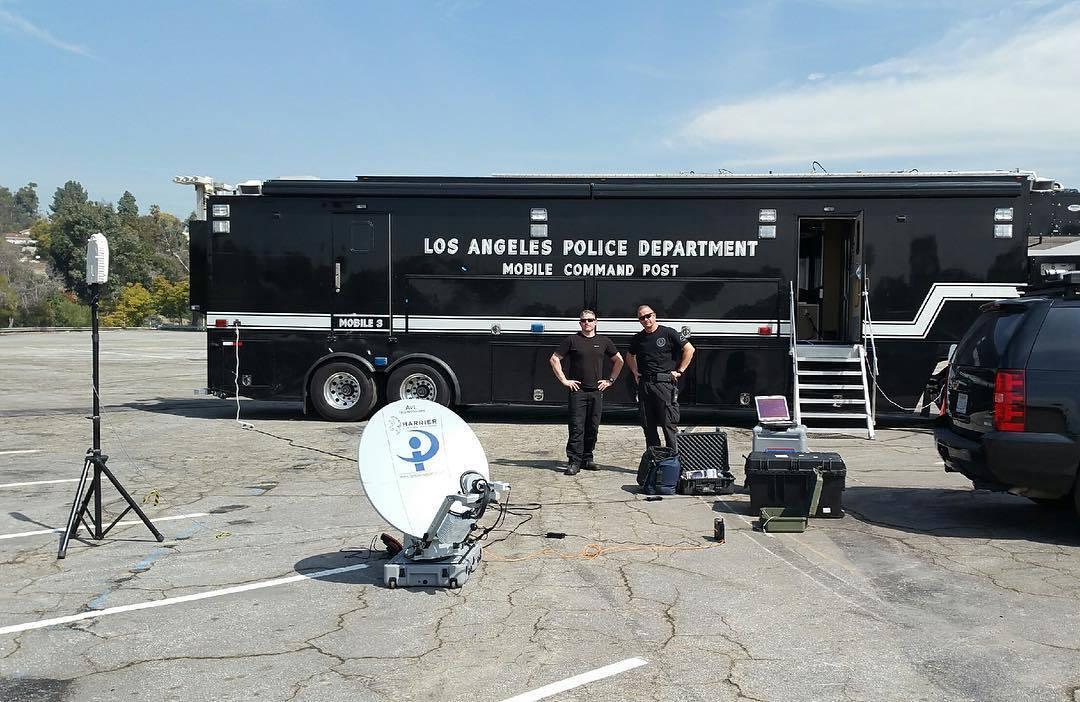
For organizations based in remote locations, staying connected is one of their biggest challenges. That’s why many businesses use satellite internet for a reliable, flexible communications system almost anywhere on the planet.
One of the most efficient satellite internet solutions is VSAT satellite technology. VSAT has become a popular choice for businesses that need unlimited geographic reach and efficient data transmission. What is VSAT? Today we’ll go over several VSAT use cases and why your business might benefit from using VSAT technology.
What is VSAT?
A VSAT (Very Small Aperture Terminal) is a two-way satellite ground station that enables faster internet connectivity for both businesses and consumers. A VSAT system comprises:
- A dish antenna
- A transceiver
- A satellite router (modem)
The “very small” part of the VSAT acronym refers to the physical size of a satellite dish, which can vary from 0.75 to 3.8 meters. A VSAT connects to geostationary satellites, which stay in the same position relative to the earth. That means that VSAT antennas do not need to track moving satellites, enabling a more reliable internet connection.
How Does VSAT Work?
To get connected to the internet, you must first link your computer to an outside antenna with a transceiver, which then sends and receives signals to a satellite transponder in the sky. The VSAT can then transmit satellite communications, such as data, voice, video, and more.
Communication satellites receive signals from these satellite dishes and then retransmit them to the earth. An unlimited number of satellite antennas can receive these retransmitted signals, so long as they are within the coverage area of that satellite.
The typical setup for VSAT networks is known as a “star topology.” Multiple VSAT terminals are spread out through a specific area and controlled by a central hub station. Some businesses also implement a mesh topology so that just one terminal can transmit data from the satellite to all other terminals.
VSAT satellite technology is available in different shapes, sizes, and frequencies. Typical operating frequencies include C-band and Ku-band and work with the following:
- Star network for a private hub
- Point-to-point for a customized private hub capable of supporting many locations
- Mesh systems for five to 30 locations
Benefits of VSAT
VSAT technology enables businesses to create a custom satellite internet infrastructure that meets their unique telecommunications needs without relying on a third-party system. Here are four more benefits of using VSAT:
- Private communications infrastructure: Setting up a VSAT network gives users complete control over its internal system, so they don’t need to rely on an externally controlled network.
- Guaranteed bandwidth: VSAT systems can provide a guaranteed level of bandwidth at broadband speeds for data and voice transmission.
- Global coverage: By connecting to geostationary satellites, a VSAT network can serve virtually any location on the planet.
- Simplified network management: Configuring a VSAT terminal is relatively simple, providing reliable internet connectivity and bandwidth.
VSAT Use Cases
Since it was first developed in the mid-1990s, VSAT technology has found applications across public and private sectors. Below are five VSAT use cases to keep in mind as you consider satellite internet solutions for your business.
VSAT for Emergency Response and Disaster Relief
A VSAT can provide reliable internet connectivity for natural disasters, which would typically take down traditional terrestrial infrastructure. VSAT enables people to get in touch with concerned family and friends while also providing reliable communication lines for police, fire, hospitals, and other emergency responders.
VSAT for Retail
With more retailers transitioning to digital solutions for inventory management and sales, staying online is critical to creating a positive customer experience. For example, some retailers use VSAT to ensure their point of sale (POS) systems have a steady connection to ensure smooth-flowing operations.
VSAT for Education
Since the COVID-19 pandemic, remote learning has become more widespread than ever before, and a reliable internet connection is essential for both students and teachers. VSAT is an ideal option for an uninterrupted remote learning experience for schools located in rural or distant areas.
VSAT for Banking and Finance
Many banks and other financial institutions use VSAT as a reliable backup for their wired internet connection, as many ATMs and other devices depend on it for functionality and security.
VSAT for Remote Locations and Rural Communities:
When set up in remote areas without a traditional internet connection, VSAT can set up the foundation for Wi-Fi hotspots in schools, community centers, and local businesses so users can access the internet from anywhere.
Upgrade Your Satellite Internet With HARRIER by IP Access
If you’re interested in a satellite internet service for your organization, IP Access can help.
The HARRIER VSAT system provides high-speed voice, cellular, data, and video streaming services in a self-contained terminal for the ultimate internet connectivity. Combining aggregated cellular data and satellite bandwidth into one portable solution allows you to choose the best option for your connectivity needs.
Contact us today to learn more about VSAT services and other satellite internet solutions.